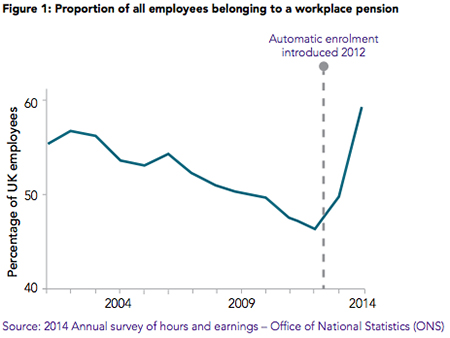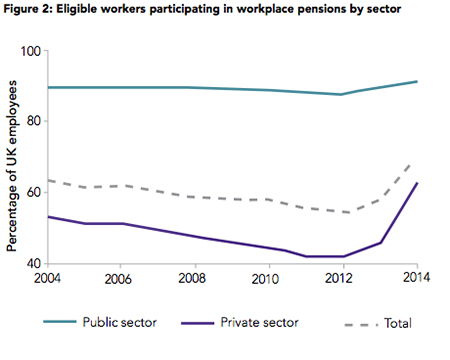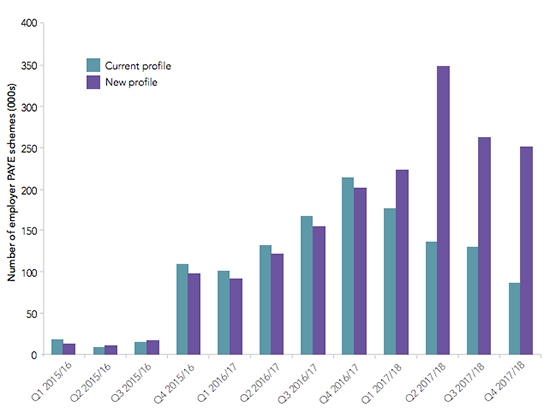Data analysis: With pension provision expected to rise exponentially over the coming two years – especially in light of the regulator's revised auto-enrolment forecast for smaller employers – it is increasingly important to monitor the links between participation and engagement.
The watchdog said this was due to more business start-ups and fewer closures. It said in a report on Thursday: “This may have an impact on pension providers and business advisers as they will need to adjust their plans for higher volumes of clients requiring their services.”
So potentially even more pension savers, then.
But while the revision could add strain to service providers, it is critical these employers are able to access the support they require in order to maintain the encouraging employee engagement figures seen so far.
Auto-enrolment trajectory


Source: ONS, Pensions Regulator
As of March this year, 5.2m workers had been auto-enrolled, with just 1 per cent coming from small and micro employers, according to the regulator's latest figures.
Medium, small and micro employers that have staged saw a 60 per cent increase in pension participation over the year, compared with 20 per cent among larger employers.
Such large leaps in participation rates are likely to increase as smaller employer staging dates hit their revised apex in Q2 2017/18 (see graph below).
Current staging profile compared against the revised profile

Source: Pensions Regulator
Wider age-related trends
It has been well documented that a key group within those who opt out of auto-enrolment do so because they believe they are too close to retirement.
Research from provider and asset manager Fidelity this week supports the idea that broader pension engagement is higher among younger people – and by younger we’re talking 30-somethings.
It conducted 1,000 online interviews with people aged 30-49 across the UK in June, and compared attitudes to retirement saving between those in the thirties and those in their forties.
The data showed that not only do workers in their 30s have higher participation rates, they are also more engaged with their pots than 40-somethings once they start saving.
More than three-quarters of 30-somethings (76 per cent) actively think about retirement, compared with 69 per cent for those in their 40s.
Only 8 per cent of those in their 30s do not contribute anything into a pension, versus nearly one in five (18 per cent) for those in their 40s.
In addition, four in five (81 per cent) younger workers contribute to a workplace pension compared with 72 per cent of 40-somethings.
Source: Fidelity
However, the research covered all pension products – including defined benefit and defined contribution, personal pensions and self-invested personal pensions – so any disparity between the two groups on engagement, concern about retirement or contributions could in part be put down to older workers being more likely to have some or all of their pension benefits tied up in DB.
At the same time, it is also probable that it is dawning on 30-somethings that their retirement is what they make it and the responsibility for pension provision rests with them.














